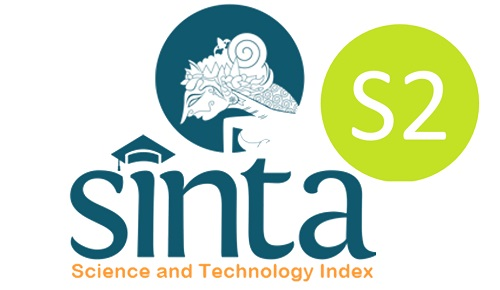APPLYING COGNITIVE LOAD THEORY IN TEACHING TENSES FOR SECOND LANGUAGE LEARNERS
DOI:
https://doi.org/10.22373/ej.v5i2.3072Keywords:
cognitive load theory, second language teaching, teaching tenses, second language learners, non-native English teachersAbstract
Cognitive load theory is a very useful concept that can be used by instructional designers, teachers, and educators to create effective instruction. It has been applied and developed in many areas including teaching English as a second or foreign language. In designing the instruction for teaching Tenses, worked example, split-attention effect, goal-free effect, modality effect, and redundancy effect are effective techniques that are used to reduce extraneous load, increase germane load, construct and automate schema. Designing and developing new instructions using cognitive load theory is also very useful. Teachers should understand this concept thoroughly because each instructional technique is connected to one another. In addition, it is very important to consider learners’ level of expertise, elements of interactivity and forms or sources of information before designing the instruction. Those elements of information and instructional techniques that are covered in the concept of cognitive load theory, should be well understood and applied by teachers particularly language teachers. Teaching foreign or second language is a big challenge for non-native English teachers; hence, effective instructional design can assist and enhance teaching learning process. This theory will contribute to positive outcomes where students understand the concept of Tenses thoroughly and teachers develop their teaching skill.Downloads
References
Atkinson, R. K., Derry, S. J., Renkl, A., & Wortham, D. (2000). Learning from examples: instructional principles from worked examples research. Review of educational research, 70(2), 181-214.
Chandler, P., & Sweller, J. (1991). Cognitive load theory and the format of instruction. Cognition and instruction, 8(4), 293-332.
Diao, Y., & Sweller, J. (2007). Redundancy in foreign language reading comprehension instruction: concurrent written and spoken presentations. Learning and instruction, 17(1), 78-88.
Florax, M., & Ploetzner, R. (2010). What contributes to the split-attention effect? The role of segmentation, picture labelling, and spatial proximity. Learning and instruction, 20(1), 216-224.
Gog, T. V., Paas, F., & Merrienboer, J. J. G. V. (2004). Process-oriented worked examples: improving transfer performance through enhanced understanding. Instructional science, 32(1), 83-98.
Kalyuga, S. (2007). Expertise reversal effect and its implications for learner-tailored instruction. Educational psychology review, 19(1), 509-539.
Kalyuga, S., Chandler, P., Tuovinen, J., & Sweller, J. (2001). When problem solving is superior to studying worked examples. Journal of educational psychology, 93(3), 579-588.
Kirschner, P. A. (2002). cognitive load theory: implications of the cognitive load theory on the design of learning. Learning and instruction, 12(1), 1-10.
Mayer, R. E., Heiser, J., & Lonn, S. (2001). Cognitive constraints on multimedia learning: when presenting more material results in less understanding. Journal of educational psychology, 93(1), 187-198.
Merrienboer, J. J. G. v., Kirschner, P. A., & Kester, L. (2003). Taking the load off a learner's mind: instructional design for complex learning. Educational psychologist, 38(1), 5-13.
Merrienboer, J. J. G. v., & Sluijsmans, D. M. A. (2009). Toward a synthesis of cognitive load theory, four-component instructional design, and self-directed learning. Educational psychologist review, 21(1), 55-66.
Moreno, R., & Mayer, R. E. (1999). Cognitive principles of multimedia learning: the role of modality and contiguity. Journal of educational psychology, 91(2), 358-368.
Moreno, R., & Mayer, R. E. (2002). Verbal redundancy in multimedia learning: when reading helps listening. Journal of educational psychology, 94(1), 156-163.
Paas, F., Renkl, A., & Sweller, J. (2003). cognitive load theory and instructional design: recent developments. Educational psychologist, 38(1), 1-4.
Paas, F., Renkl, A., & Sweller, J. (2004). Cognitive load theory: instructional implications of the interaction between information structures and cognitive architecture. Instructional science, 32(1), 1-8.
Renkl, A., Atkinson, R. K., & Grome, C. S. (2004). How fading worked solution steps works - A cognitive load perspective. Instructional science, 32(1), 59-82.
Schnotz, W., & Kurschner, C. (2007). A reconsideration of cognitive load theory. Educational psychology review, 19(1), 469-508.
Sweller, J., Merrienboer, J. J. G. v., & Paas, F. G. W. C. (1998). Cognitive architecture and instructional design. Educational psychology review, 10(3), 251-296.
Tabbers, H. K., Martens, R. L., & Merrienboer, J. J. G. v. (2004). Multimedia instructions and cognitive load theory: effects of modality and cueing. British journal of educational psychology, 74(1), 71-81.
Tindall-Ford, S., & Sweller, J. (2006). Altering the modality of instructions to facilitate imagination: interactions between the modality and imagination effects. Instructional science, 34(1), 343-365.
Downloads
Published
Issue
Section
License
Proposed Policy for Journals That Offer Open Access
Authors who publish with Englisia journal agree to the following terms:
- Authors retain copyright and grant the journal right of first publication with the work simultaneously licensed under a Creative Commons Attribution License that allows others to share the work with an acknowledgement of the work's authorship and initial publication in this journal.
- Authors are able to enter into separate, additional contractual arrangements for the non-exclusive distribution of the journal's published version of the work (e.g., post it to an institutional repository or publish it in a book), with an acknowledgement of its initial publication in this journal.
- Authors are permitted and encouraged to post their work online (e.g., in institutional repositories or on their website) prior to and during the submission process, as it can lead to productive exchanges, as well as earlier and greater citation of published work (See The Effect of Open Access).









